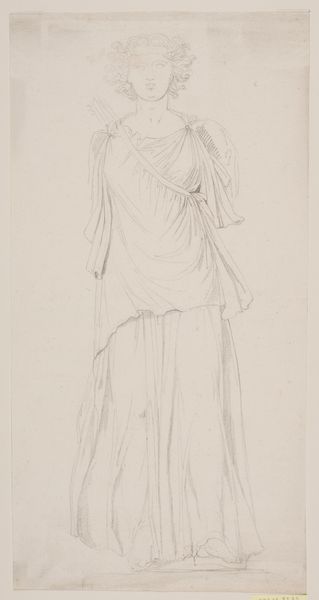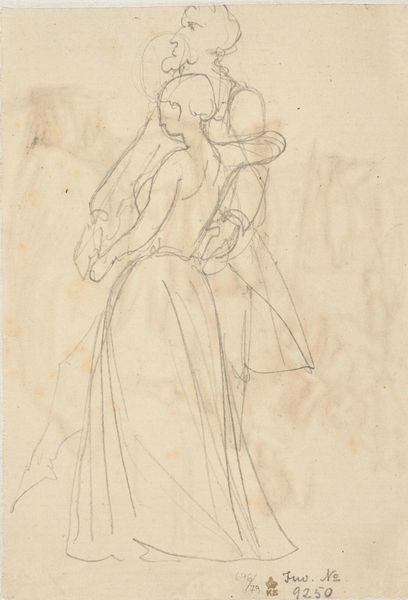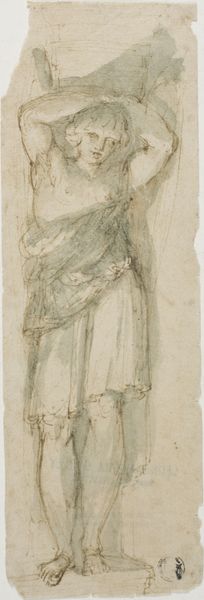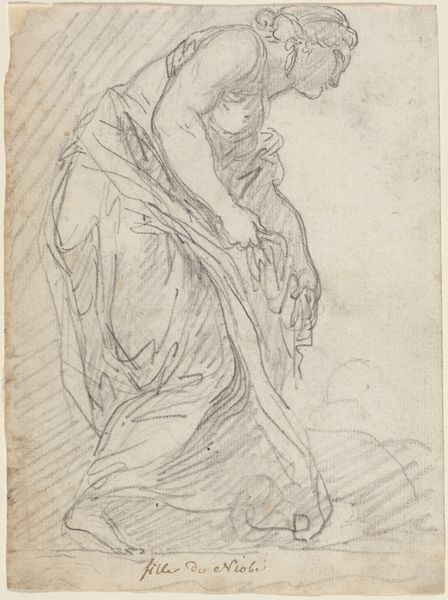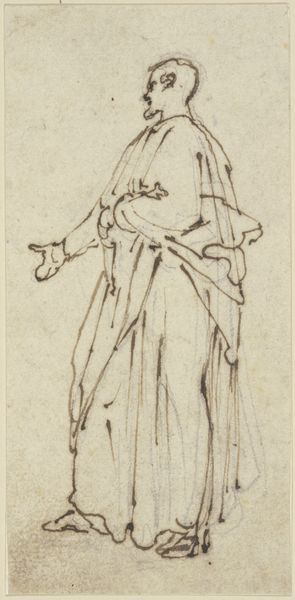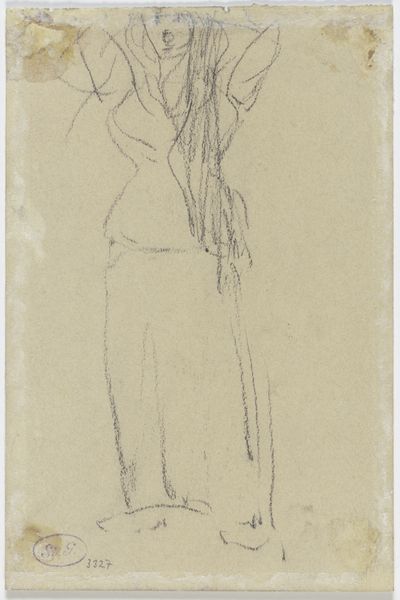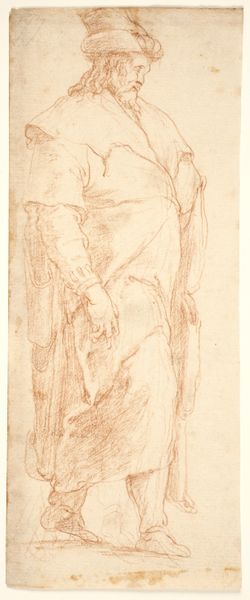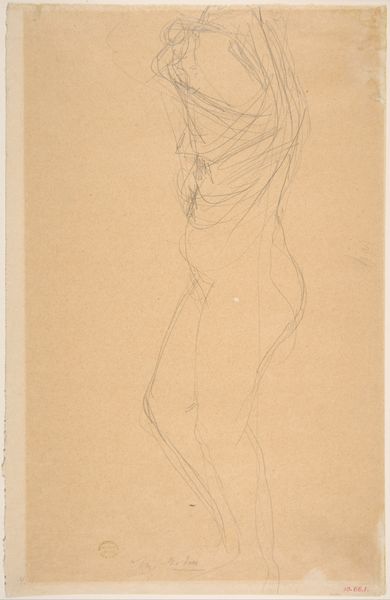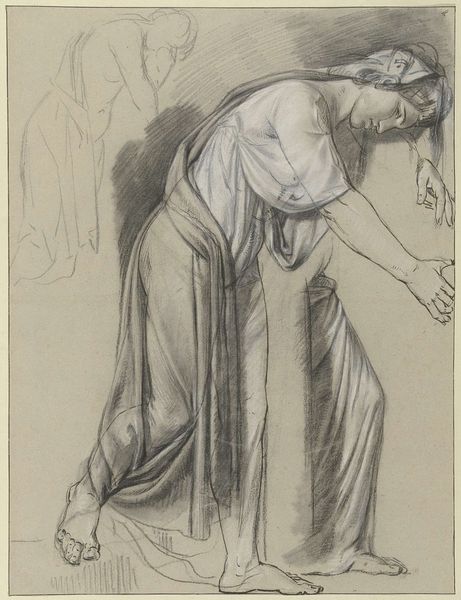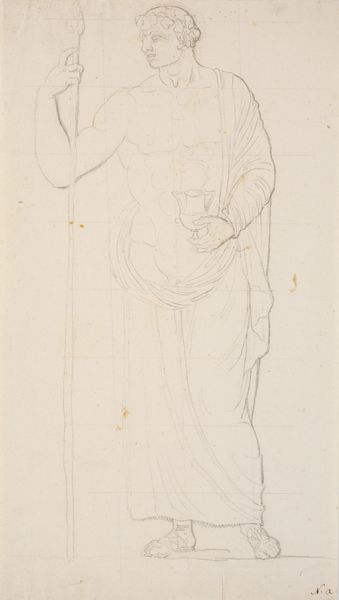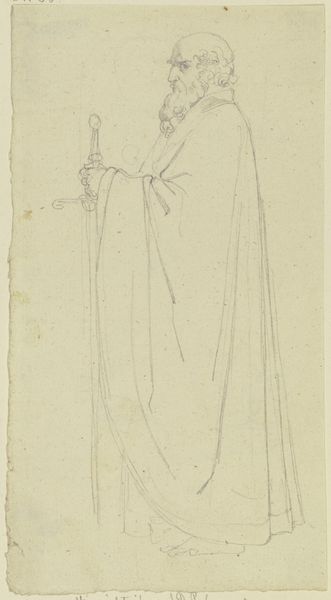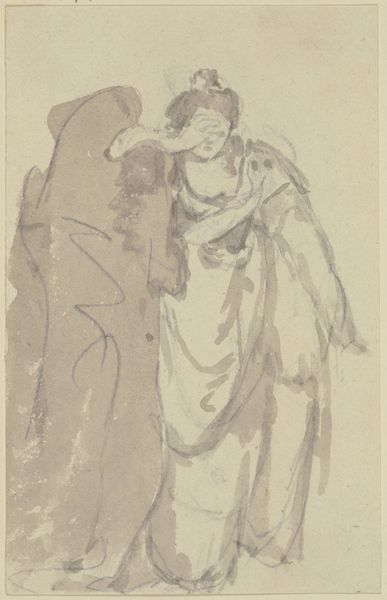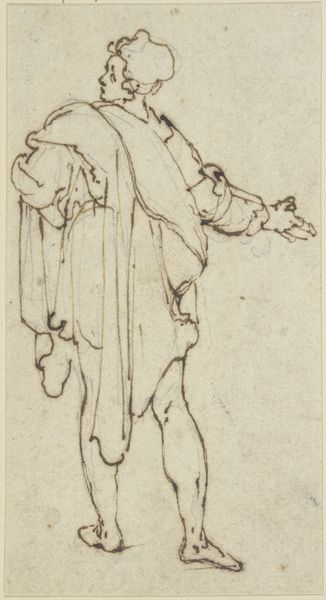
drawing, pencil
#
portrait
#
drawing
#
neoclacissism
#
classical-realism
#
figuration
#
pencil drawing
#
pencil
Dimensions: 158 mm (height) x 69 mm (width) (bladmaal)
Editor: We're looking at "Hebe? Studie" by Bertel Thorvaldsen, a pencil drawing likely created sometime between 1770 and 1844. The figure, presumably Hebe, has a serene almost melancholy air. I wonder, what strikes you most about this piece? Curator: The prominence of the Neoclassical style here reveals much about the cultural ambitions of the period. Thorvaldsen's choice to depict Hebe, the Greek goddess of youth and cupbearer to the gods, connects to the wider societal fascination with classical antiquity. Note the deliberate attempt to recapture the perceived moral and aesthetic purity of ancient Greece and Rome. Editor: I see the Neoclassical influence in the flowing lines and the idealized figure. Curator: Indeed. The medium itself, pencil on paper, played a role in democratizing art. Drawing allowed for more accessible artistic training and production. Was art becoming more accessible? Who got to represent the ideal of beauty, of Greek ideals? Editor: That's a good point. The pencil medium made artistic expression more widespread. Curator: It certainly did. This work, a drawing for a sculpture, also tells us about the workflow and artistic creation of the era. Do you feel the political power play of imagery is evident? Editor: I do now. Considering this study in relation to its potential sculpture, and then the sociopolitical landscape makes me appreciate the nuance within Neoclassicism so much more. Thank you. Curator: My pleasure. It's crucial to consider art's complex roles in shaping and reflecting societal values. The context unveils another world beneath.
Comments
No comments
Be the first to comment and join the conversation on the ultimate creative platform.
